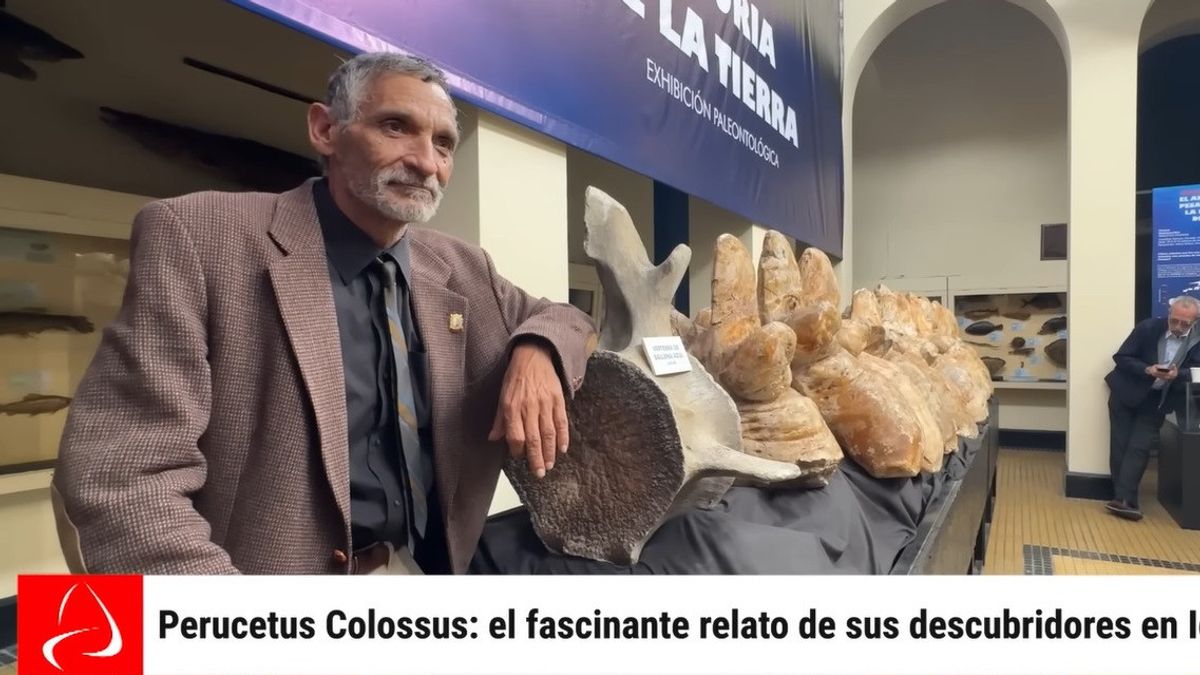JAKARTA - Old and commonly known as the largest animal on earth, blue whales now have competitors after paleontologists managed to uncover fossils of ancient animals.
Earlier this month, scientists described ancient whale fossils excavated in Peru and named Perucetus collossus, living about 38-40 million years ago during the Eocene era, being a manatee-like creature, possibly bigger and heavier than the blue whale.
The researchers estimate that Perucetus is about 66 feet (20 meters) long and weighs up to 340 metric tons, a mass that exceeds other known animals, including today's blue whales and the largest dinosaurs.
"This animal's main beauty is of course its extreme weight, which suggests that evolution can produce organisms that have characteristics that exceed our imagination," said paleontologist Giovanni Bianucci of the University of Pisa in Italy, lead author of the study published in the journal Nature. August 20.
The estimated minimum weight of Perucetus is 85 tonnes, with an estimated average of 180 tonnes. The largest blue whale known to weigh about 190 tonnes, although longer than Perucetus with a height of 110 feet (33.5 meters).
Meanwhile, Argentinosaurus, a four-legged long-necked herbivore that lived about 95 million years ago in Argentina, is estimated to weigh about 76 tonnes, which in a study published in May is considered the largest dinosaur.
Part of the Perucetus skeleton is excavated in the southern Peruvian coastal desert - an area rich in whale fossils - with 13 spines, four ribs, and one hip bone. Its extraordinary bones are large, very dense and hard. This characteristic, called pachyosteoclerosis, is not present in the live cetacean group that includes whales, dolphins, and dolphins but is found in sirens, other marine mammal groups including manatees and dugongs.
While the skeleton weight alone is estimated to be between 5 and 8 tons, at least double the blue whale.
"The fat, bloating whale may look more like a siren than any live whale. Among the sirens, because of its enormous size and possible similar lifestyle, it may be given Steller's sea cow, which was discovered in 1741 and culled by some humans years later," explained Bianucci.
No remnants of the skull or teeth were found, making the interpretation of diet and lifestyle more difficult. The researchers suspect that Perucetus is living like a siren - not an active predator but an animal looking for food at the bottom of a shallow beach water.
Because of its heavy skeleton and, most likely, its very large body, this animal is clearly a slow swimmer. For me, at this stage of our knowledge, it is a kind of peaceful giant, somewhat similar to a super-sized creature. manatee. This must be a very impressive animal, but maybe not so scary," said paleontologist Olivier Lambert of the Royal Belgian Institute of Natural Sciences in Brussels.
"Maybe it's a herbivore like a siren, but it's the only case between cetaceans. Maybe it eats small molluscs and crustaceans on a sandy bottom like the gray whale still around," added Bianucci.
Researchers say it is unlikely that Perucetus is a filterer like today's balin whales, including blue whales.
SEE ALSO:
It said the whale evolved about 50 million years ago from a moderate sized land mammal. Perucetus still has the remains of the limbs.
Framework characteristics show that Perucetus is related to Basilosaurs, another ancient whale that has a similar length but not too large. Basilosaurs, are active predators that have a sleek body, strong jaw and large teeth.
"Percetus shows that cetacea developed the gigantisme at least twice: in a relatively recent time, with the evolution of large balin whales, and about 40 million years ago, with radiation from relatives of Basilosaurs where Perucetus was the most extraordinary representative," Bianucci said.
The English, Chinese, Japanese, Arabic, and French versions are automatically generated by the AI. So there may still be inaccuracies in translating, please always see Indonesian as our main language. (system supported by DigitalSiber.id)


















